21 Wild Animals in Norway [Wildlife in Norway]
Want to know more about the wildlife in Norway?
Discover 21 wild animals in Norway in this post, as well as interesting facts about them. 🇳🇴
TABLE OF CONTENTS [show]
Learn All About Norwegian Animals
Ready to learn all about Norwegian animals?
I’ve always been fascinated by animals, and by how they can be so different from one country to another. In this guide, we’ll focus on the many animals Norway has on the land, in the sky, and underwater.
I’ve split the guide into 4 categories:
- Native animals from Norway
- Endangered animals of Norway
- What is the national animal of Norway?
- How many animals native to Norway?
Let’s dive in right away with our first category!
Native Animals from Norway
Norway is a European country located in the northeastern part of the continent, in Scandinavia. It is made of the mainland territory and the archipelago of Svalbard as well as a few subantarctic and antarctic islands, is ruled by a monarch, is one of the best countries to live in in the world, and has deep, egalitarian values. It is bordered by Sweden, Finland, and Russia, and its capital and largest city is Oslo, which counts more than 698,000 inhabitants (but more than 1,588,000 if you include the metropolitan area).
An interesting part of the country that I wanted to tackle is its wildlife. In light of that, I have listed the best of it, and I hope you will love learning what animals live in Norway.
Here’s the Norway animals list.
1. Polar bear
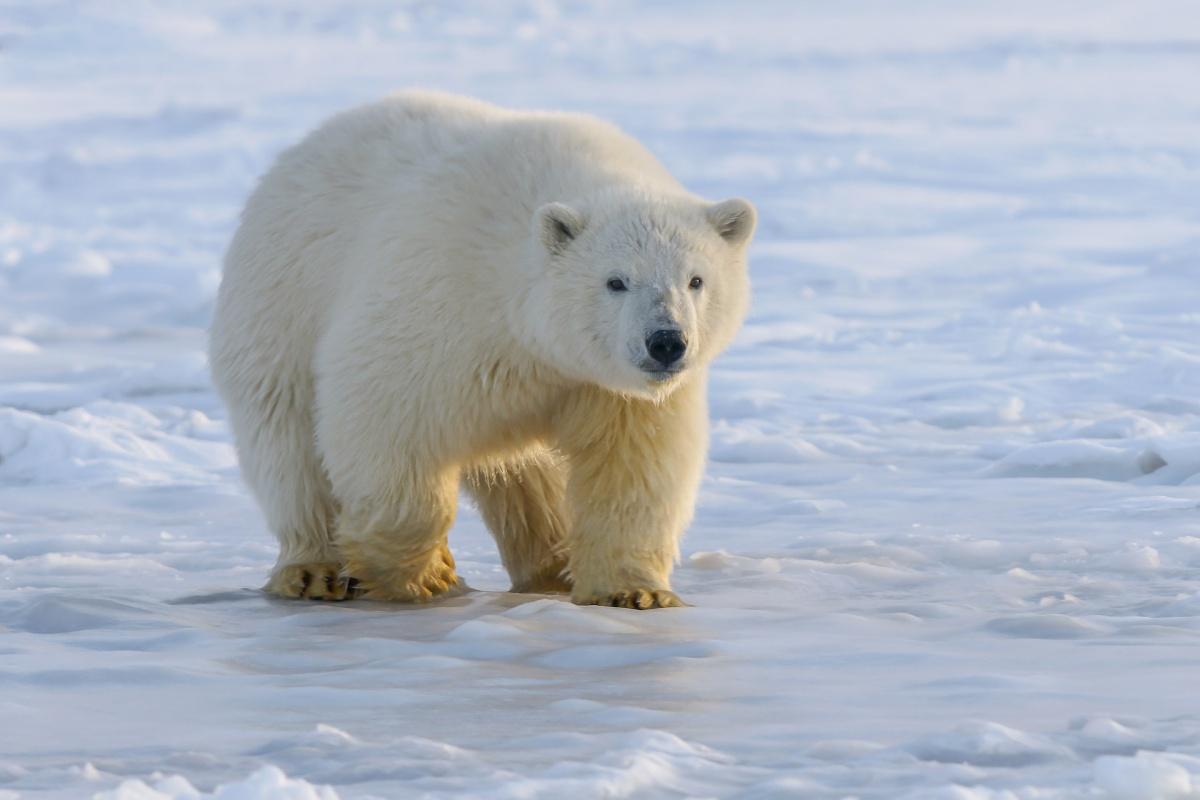
- Name: Polar bear
- Scientific name: Ursus maritimus
- Conservation status:
We are starting off this list with a very impressive animal: the polar bear!
This bear is the largest bear in the world, as well as the largest terrestrial carnivore, reaching weights of up to 700 kg / 1,540 lb.
Although it usually cannot be found in mainland Norway, the polar bear inhabits the northernmost areas of the archipelago of Svalbard, which is within the Arctic region. It is seriously affected by habitat loss due to global warming and is thus considered vulnerable to extinction.
2. Svalbard reindeer
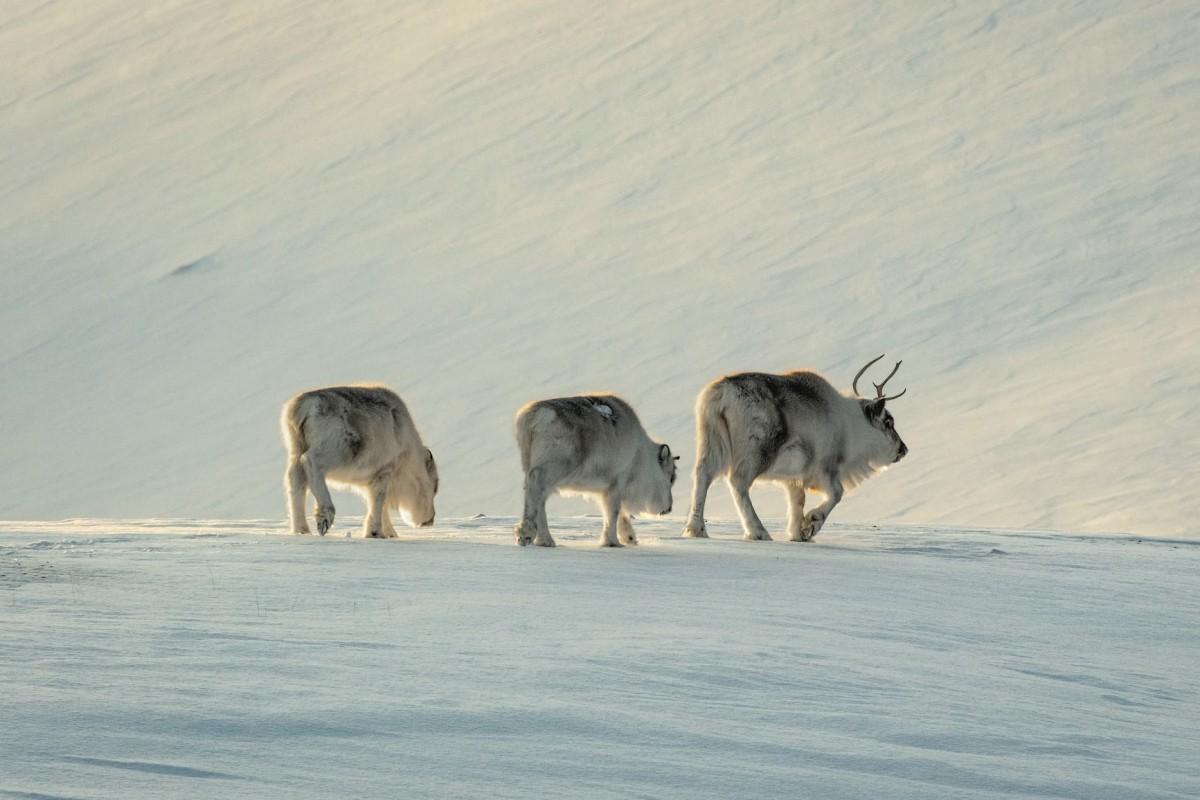
- Name: Svalbard reindeer
- Scientific name: Rangifer tarandus platyrhynchus
- Conservation status:
As its name suggests, the Svalbard reindeer is a small subspecies of the reindeer endemic to the archipelago of Svalbard. It has lived there for about 5,000 years and only started declining over the past decades, primarily due to pollution and climate change.
On the islands, there are about 22,000 individuals, and they are the only large, grazing mammals in the region, which is why they are particularly important to science.
3. Arctic fox
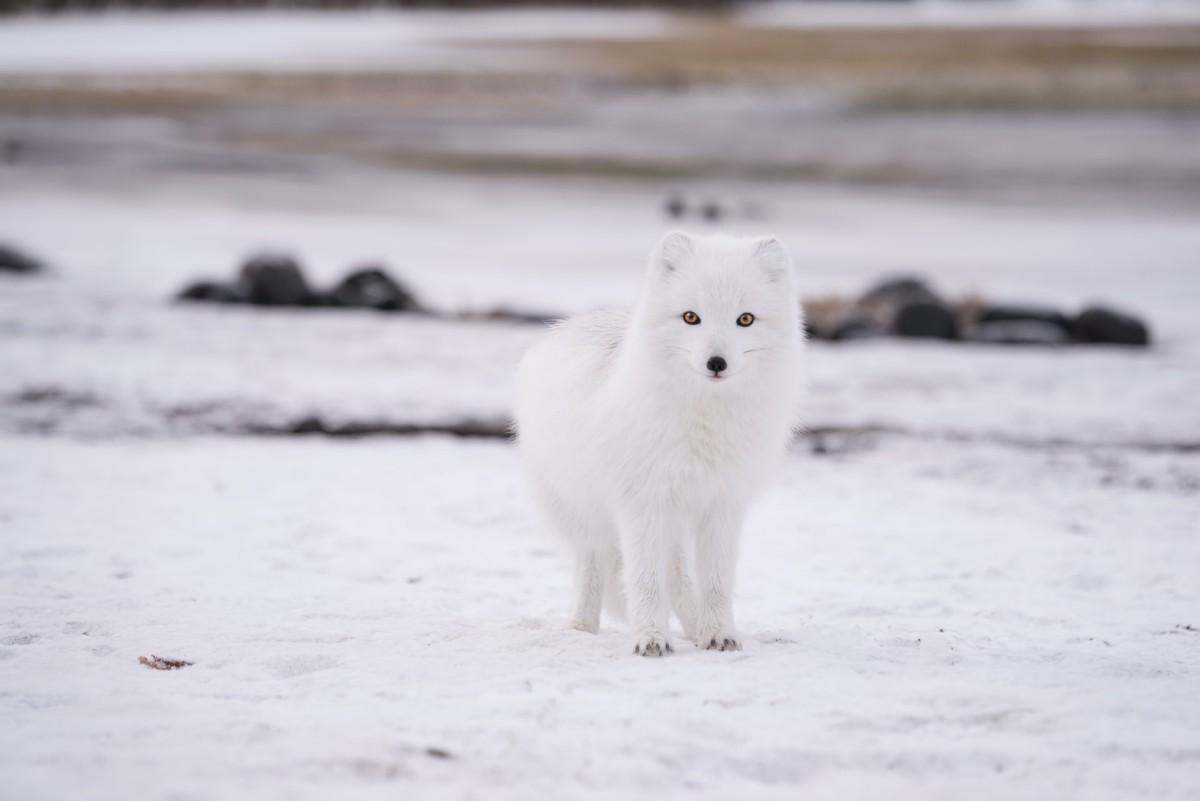
- Name: Arctic fox
- Scientific name: Vulpes lagopus
- Conservation status:
The Arctic fox, also known as the snow fox, the white fox, or the polar fox, is a small species of fox that particularly adapted to the harsh environment of the Arctic region. It is fairly common within its range, which is circumpolar, and its fur is ideal for camouflage… and also the reason it is sometimes hunted.
This fox primarily feeds on voles, ringed seal pups, waterfowl, fish, and seabirds.
4. Ringed seal
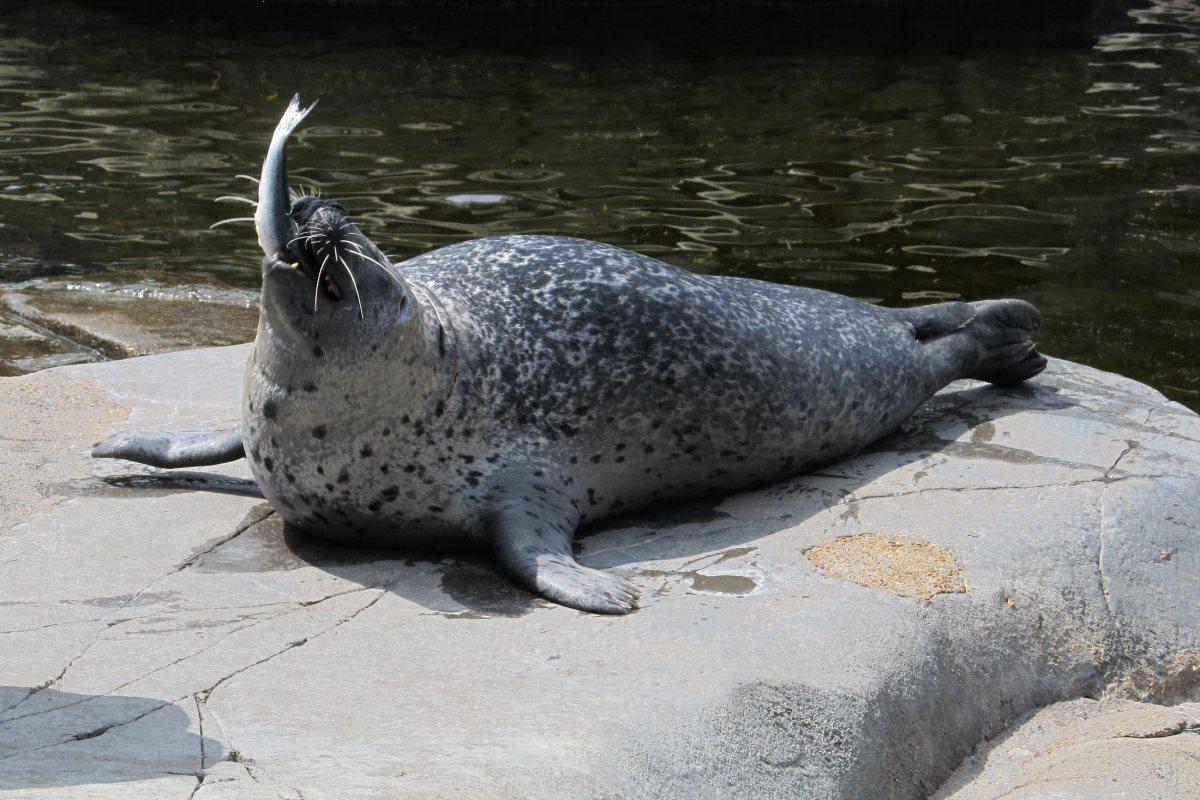
- Name: Ringed seal
- Scientific name: Pusa hispida
- Conservation status:
The ringed seal is a species of seal native to the sub-Arctic and Arctic regions of the planet. It is relatively small, and has light gray rings around the dark spots covering its body, hence its name.
This seal is the main target of polar bears, and it is vulnerable during the pupping season, when foxes, gulls, and even sharks, killer whales, and walruses attack the newborn. When it comes to feeding itself, it eats shrimp, fish, cod, and herring.
5. Elk
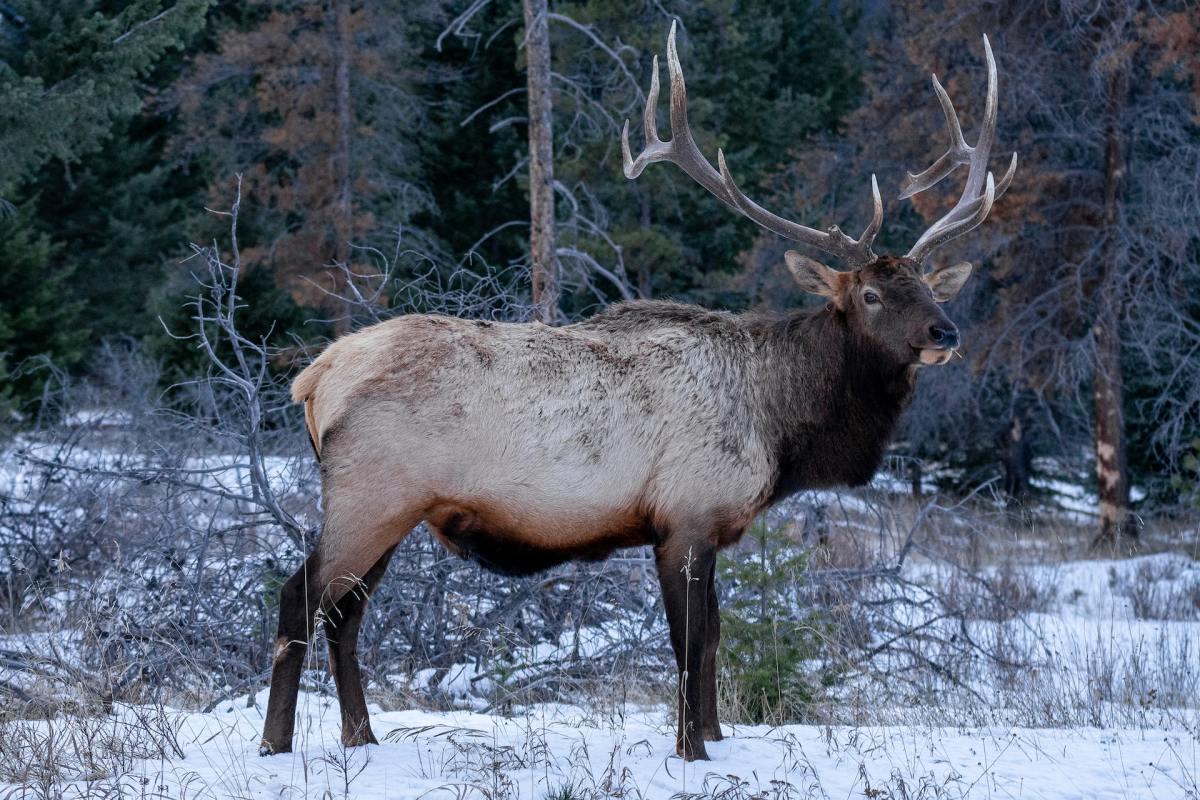
- Name: Elk
- Scientific name: Alces alces
- Conservation status:
The elk, also known as the moose in North America, is the largest and heaviest species of deer in the world. It can be found all around mainland Norway and inhabits temperate, boreal, and subarctic forests.
Although the elk is listed as least concern, its range has diminished over the years, primarily because of hunting, but also human encroachment and urban and agricultural expansion. In Norway, its numbers are pretty large: about 120,000 individuals.
6. Wolverine
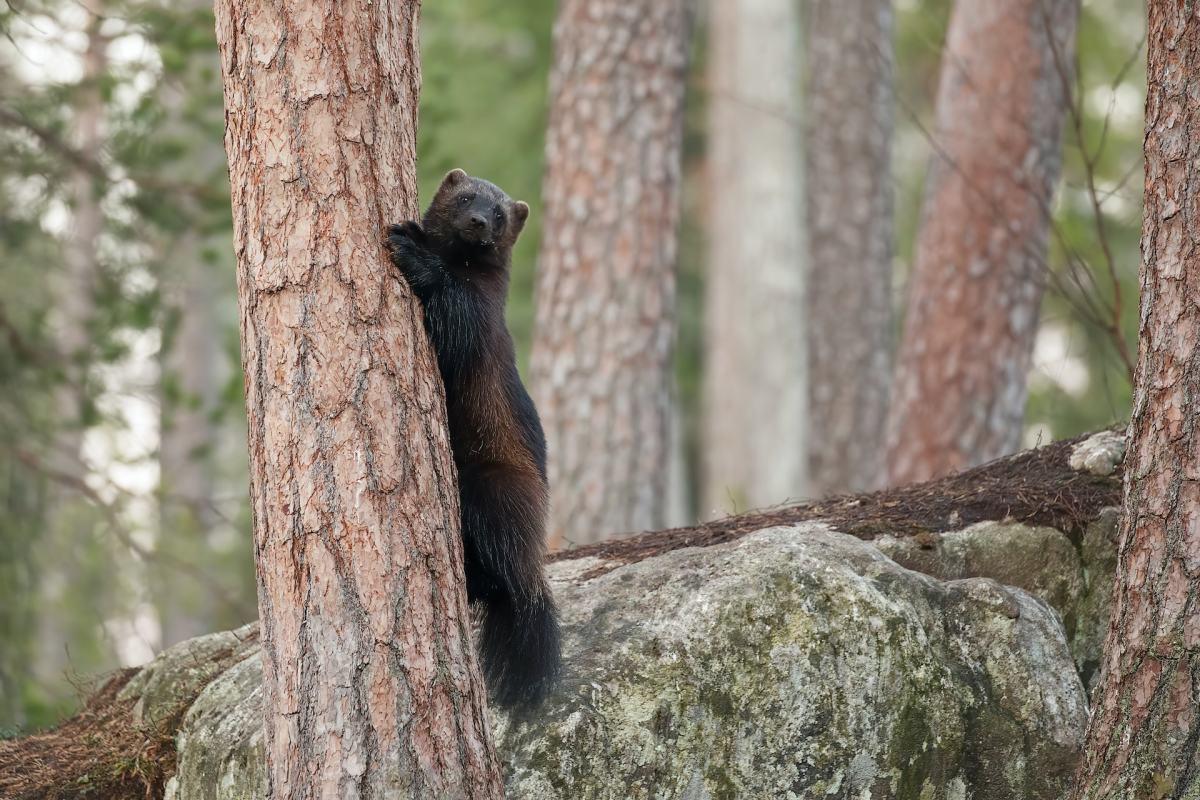
- Name: Wolverine
- Scientific name: Gulo gulo
- Conservation status:
The wolverine, also known as the glutton, the quickhatch, or the carcajou, is the largest terrestrial species of mustelid on the planet. It is solitary and carnivorous, and despite its small size, is incredibly strong and ferocious, allowing it to kill prey much larger than itself, including elks and lynxes.
The main Norwegian population of the wolverine is located on the Snøhetta plateau and in the North, where there are about 150 individuals.
7. Eurasian brown bear
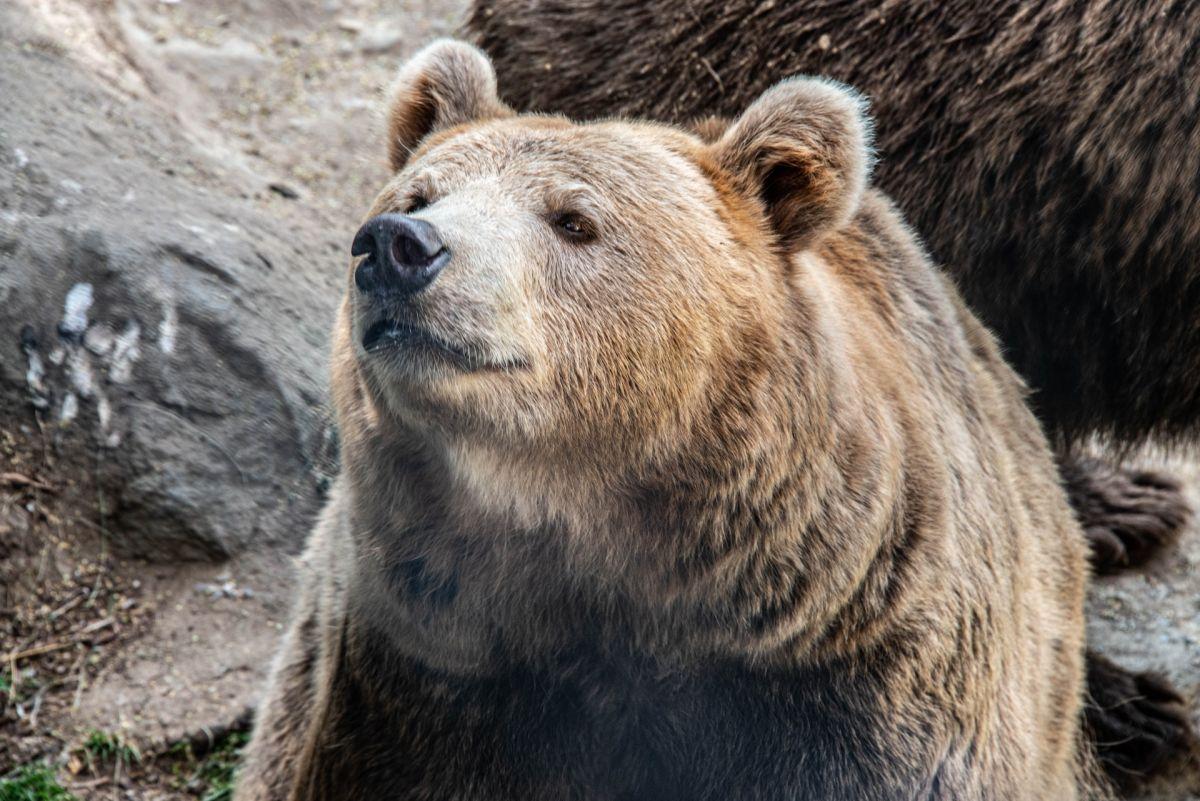
- Name: Eurasian brown bear
- Scientific name: Ursus arctos arctos
- Conservation status:
You are starting to think that Norway is a scary country, aren’t you? On top of all these large, fierce animals comes the Eurasian brown bear, one of the most widespread and common subspecies of the brown bear, and the second-largest bear in the world after its polar counterpart.
However, Norway hosts one of the smallest amounts of Eurasian brown bears within the range of this animal, with only about 100 individuals.
8. Muskox
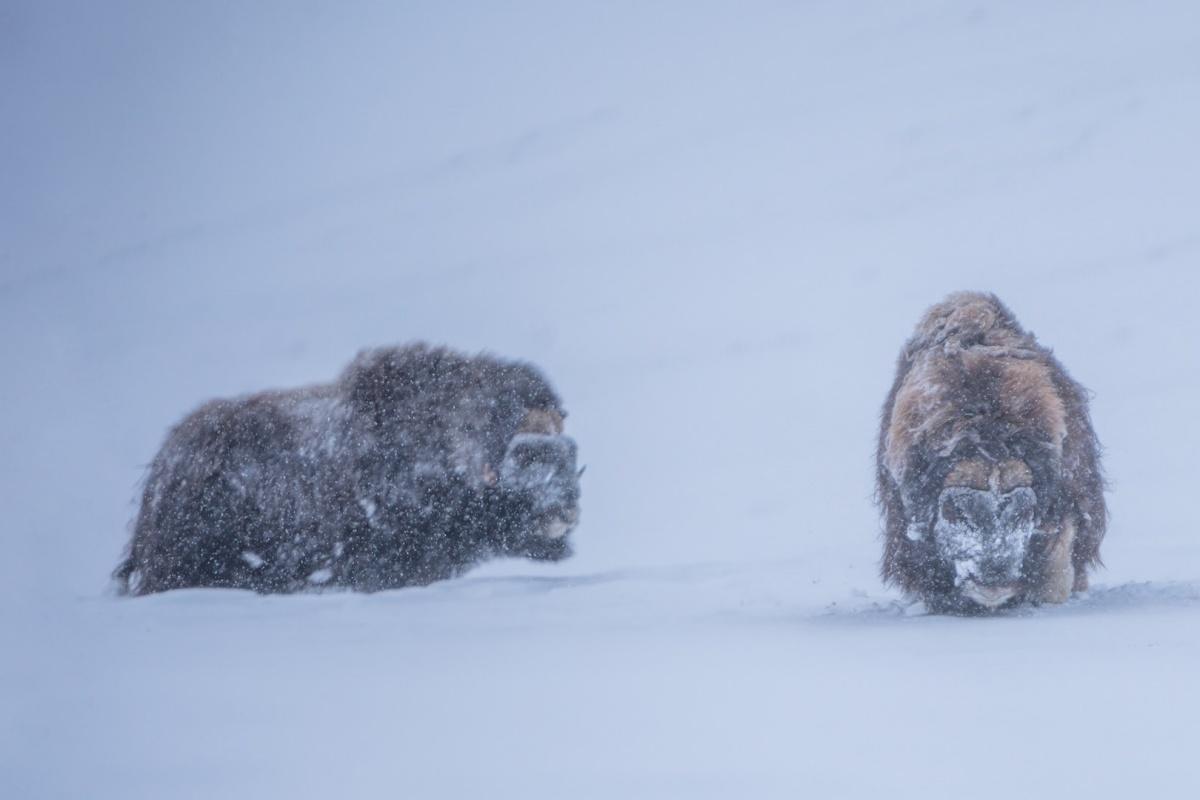
- Name: Muskox
- Scientific name: Ovibos moschatus
- Conservation status:
The muskox, sometimes spelled musk-ox or musk ox, is a large species of hoofed mammal native to the subarctic and arctic regions of the world. A small population lives in the southern half of Norway, but it can primarily be found on Svalbard.
In fact, the muskox was introduced to Norway from Greenland in around 1925. This population then spread to Sweden, where they can still be found.
9. Rock ptarmigan
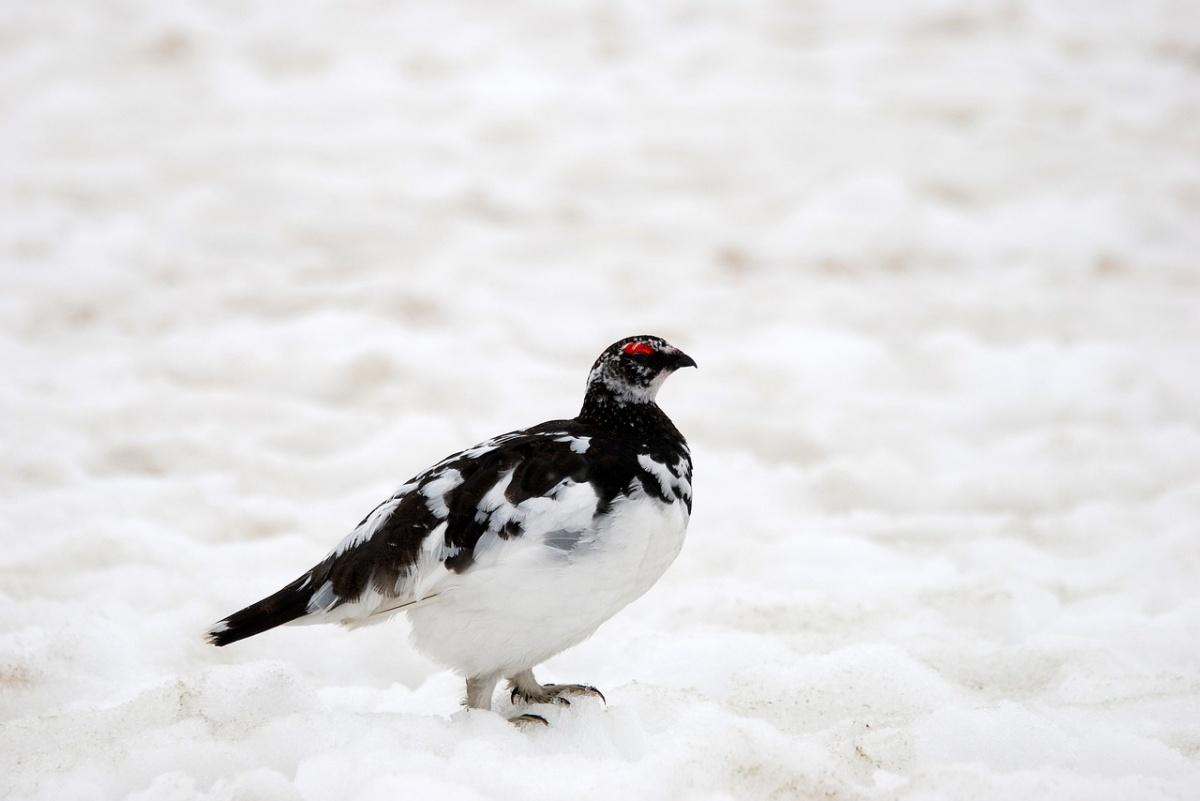
- Name: Rock ptarmigan
- Scientific name: Lagopus muta
- Conservation status:
The rock ptarmigan, also simply known as the ptarmigan, is a medium-sized species of grouse native to the northernmost parts of the Northern Hemisphere, with very small, scattered populations in Central Europe and Asia.
While Norway is home to a lot of migratory birds, the rock ptarmigan is the only resident bird in the country. It lives in the mountains of the country and changes color depending on the season.
10. Eurasian wolf
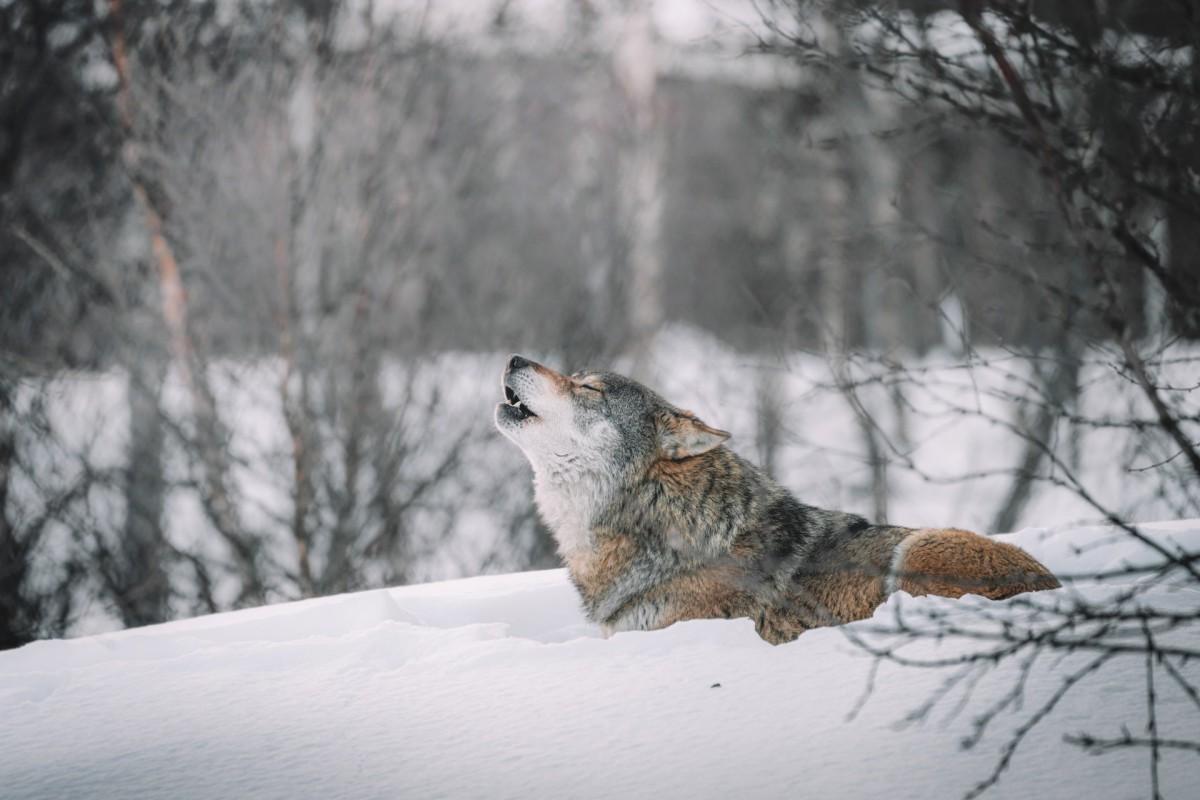
- Name: Eurasian wolf
- Scientific name: Canis lupus lupus
- Conservation status:
The Eurasian wolf, also known as the common wolf, is the most common and widespread subspecies of the gray wolf. It can be found throughout much of Eurasia, and as far south as the Arabian Peninsula and the Indian subcontinent.
This wolf was exterminated in Denmark and Norway, where the last specimen was shot in 1973. Since 1978, it was slowly but steadily introduced, first to Sweden, but now it also lives in southern Norway.
11. Common European adder
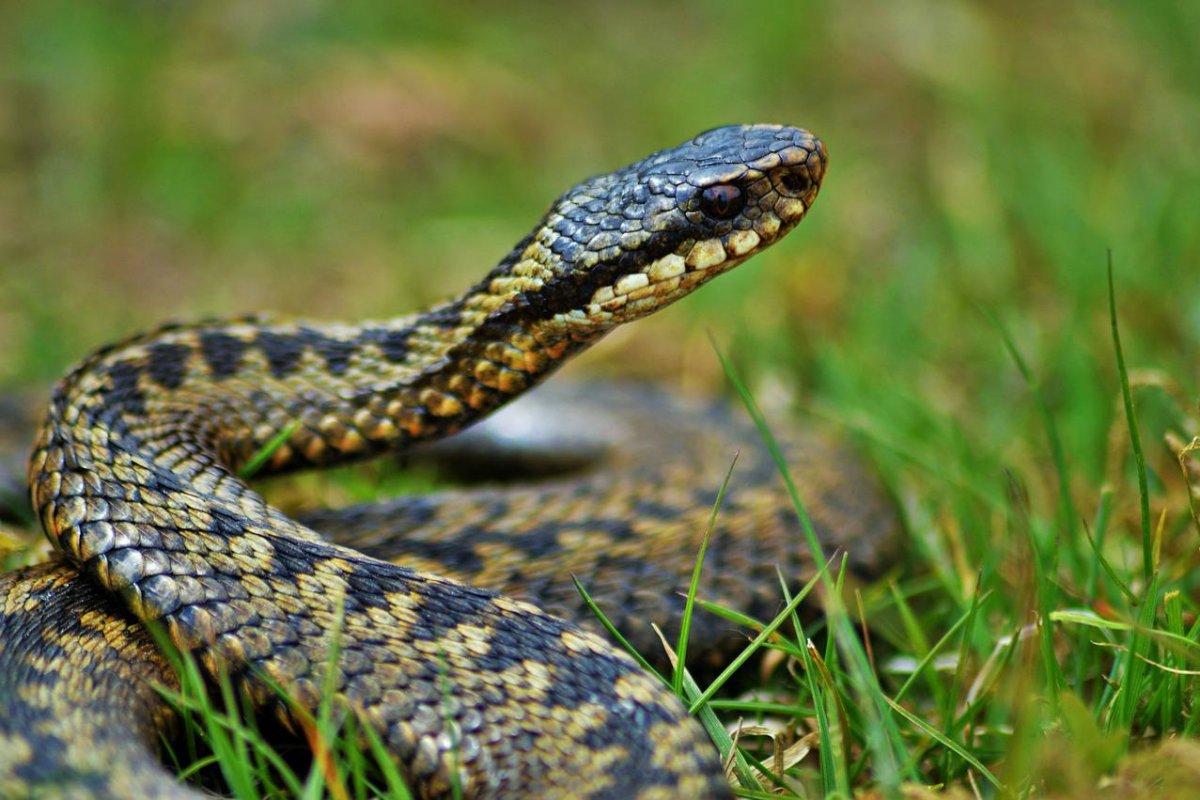
- Name: Common European adder
- Scientific name: Vipera berus
- Conservation status:
Norway is not only about incredibly cold, hostile environments, otherwise, the common European adder, also known as the common European viper, wouldn’t be there.
This viper, despite being potentially dangerous, is usually not very aggressive and only bites when seriously provoked. While the bite can be painful, it is rarely fatal. In Norway, it is known as “hugorm”, “huggorm” or “hoggorm”, which means “striking snake”. Besides, under the Wildlife Act 1981, it is illegal to sell, harm, or kill common European adders in the country.
12. Loggerhead sea turtle
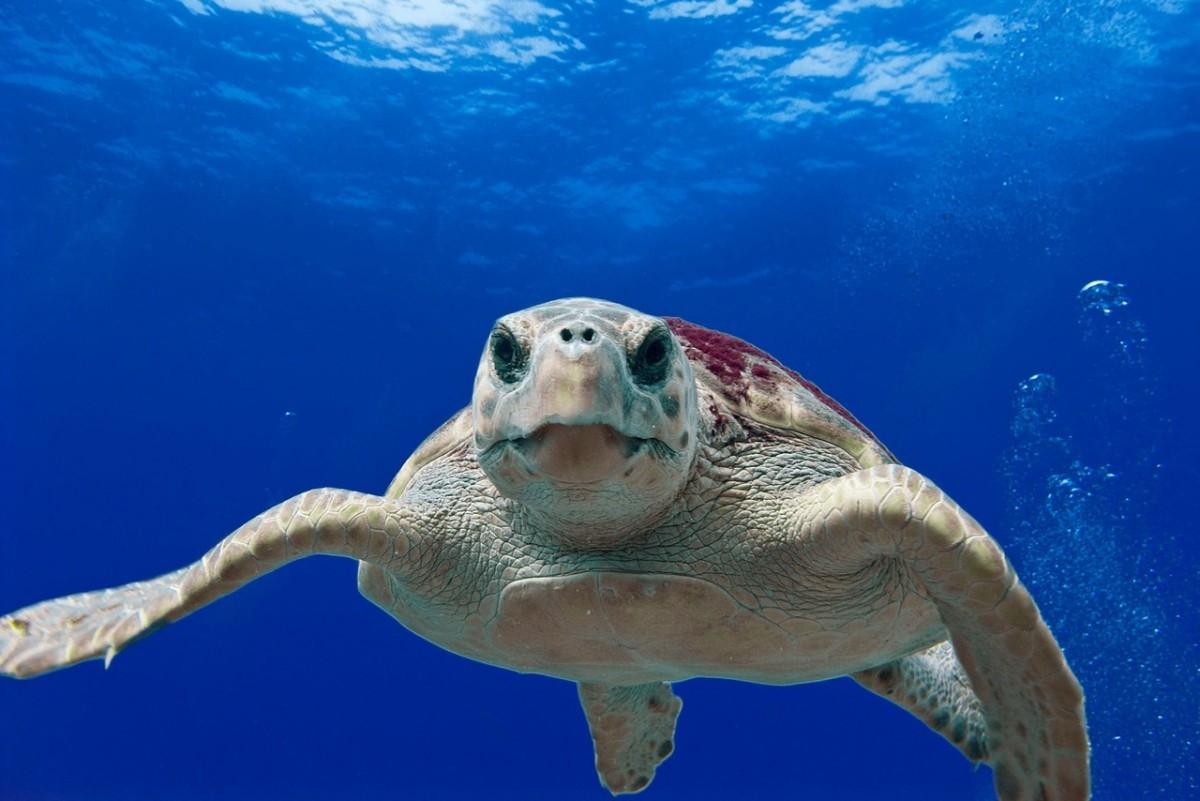
- Name: Loggerhead sea turtle
- Scientific name: Caretta caretta
- Conservation status:
The loggerhead sea turtle is a species of oceanic turtle with a worldwide distribution but mostly focused on the coastlines of the Atlantic and the Indian Oceans. It sometimes visits the southernmost coastlines of Norway, and it can weigh up to 450 kg / 1,000 lb!
This sea turtle spends most of its life in the deep ocean, but females come ashore to lay their eggs, and this is when they are particularly vulnerable to fishing accidents, coastal lighting, and the introduction of predators.
13. Eurasian lynx
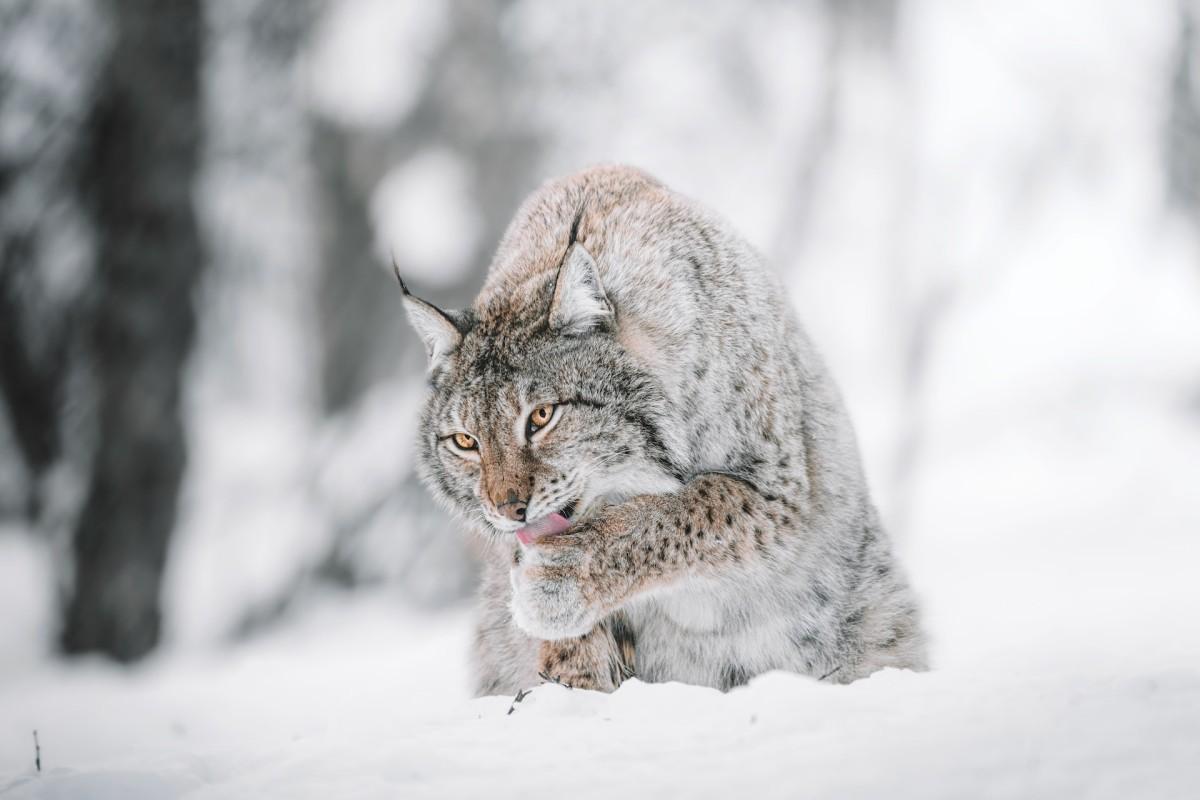
- Name: Eurasian lynx
- Scientific name: Lynx lynx
- Conservation status:
The Eurasian lynx is a medium-sized species of wild cat spread throughout much of Eurasia and as far south as the Himalayas. It lives in the temperate and boreal forests at the heights of the mountains, at an elevation of up to 5,500 m / 18,000 ft.
This lynx has had a long history of interaction with humans in Norway: hunted extensively from 1846 to 1980 and subjected to an official bounty, its population decreased to 260 individuals and it almost became locally extinct. Now, there are about 452 mature Eurasian lynxes in the country.
14. Eurasian beaver
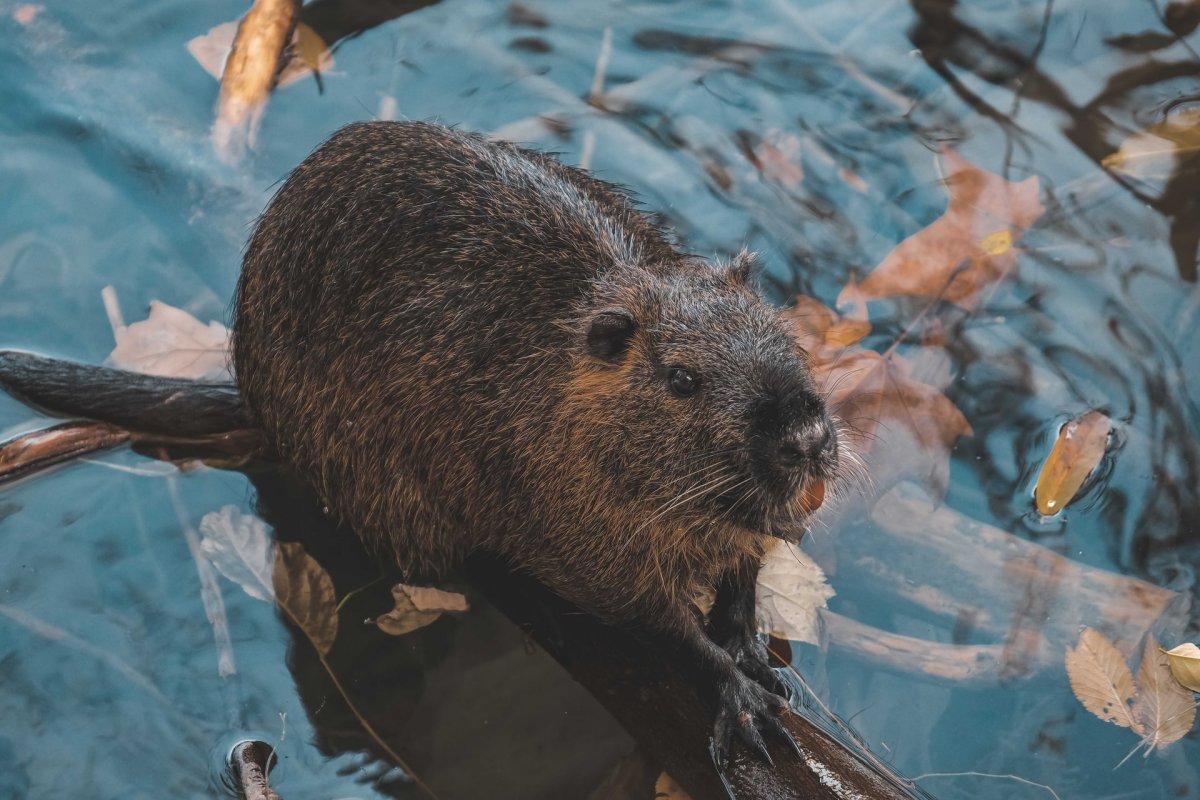
- Name: Eurasian beaver
- Scientific name: Castor fiber
- Conservation status:
The Eurasian beaver, also known as the European beaver, is a species of beaver native to all of Eurasia, but after being hunted to near extinction, can now only be found in a much smaller range, although it is recovering.
Norway is one of the most ideal countries for Eurasian beavers, which are thriving; the local populations have been used as imports in other countries to revive the species.
15. Mountain hare
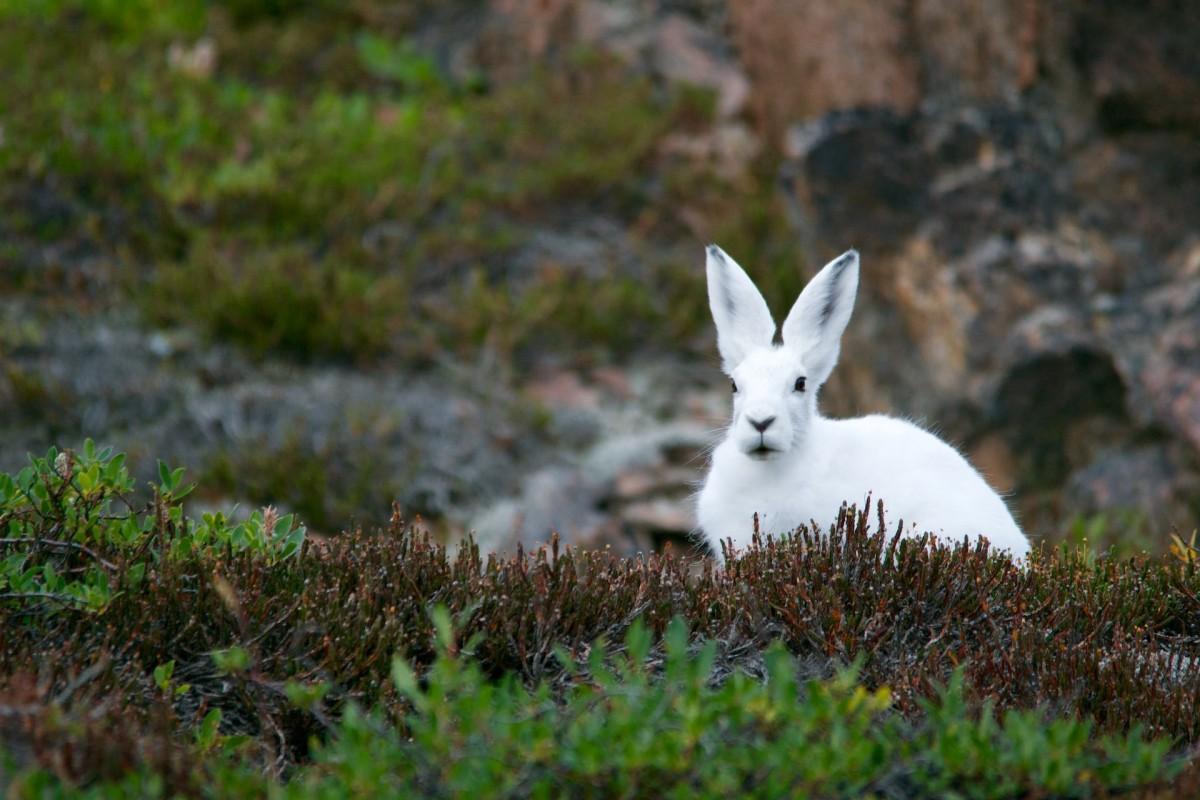
- Name: Mountain hare
- Scientific name: Lepus timidus
- Conservation status:
The mountain hare, also known as the variable hare, the blue hare, the white hare, the snow hare, the alpine hare, or the tundra hare, is a species of hare spread throughout the northernmost regions of Eurasia, from Scandinavia and the Svalbard archipelago to northeastern Russia.
This hare has to compete with the European hare in Norway. Since its counterpart is larger, it usually drives the mountain hare away.
16. Walrus
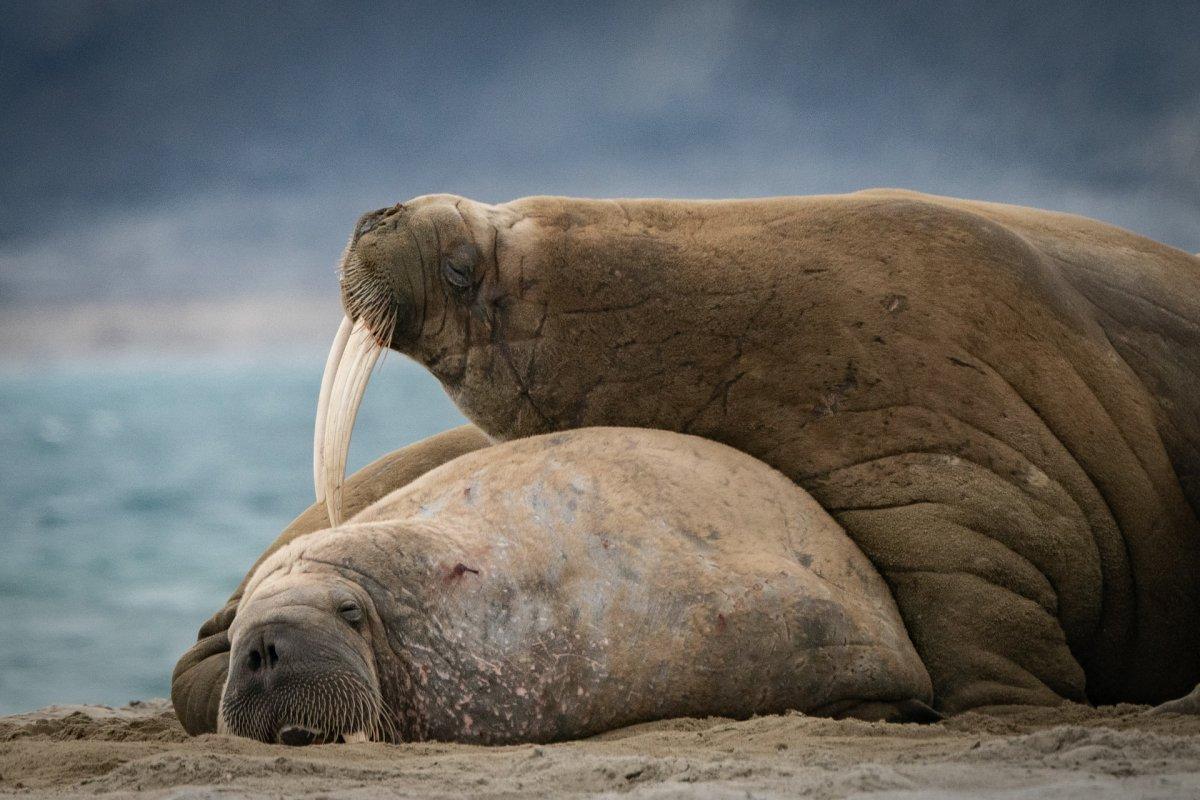
- Name: Walrus
- Scientific name: Odobenus rosmarus
- Conservation status:
The walrus is a large species of marine mammal native to the subarctic and arctic regions of the world. While it sometimes appears on the coastline of mainland Norway, it can primarily be found around Svalbard.
This mammal is incredibly large and heavy, reaching weights of more than 2,000 kg / 4,400 lb, and only exceeded by elephant seals among pinnipeds. It is characterized by its long, prominent tusks and is threatened by overhunting and climate change.
17. European pine marten
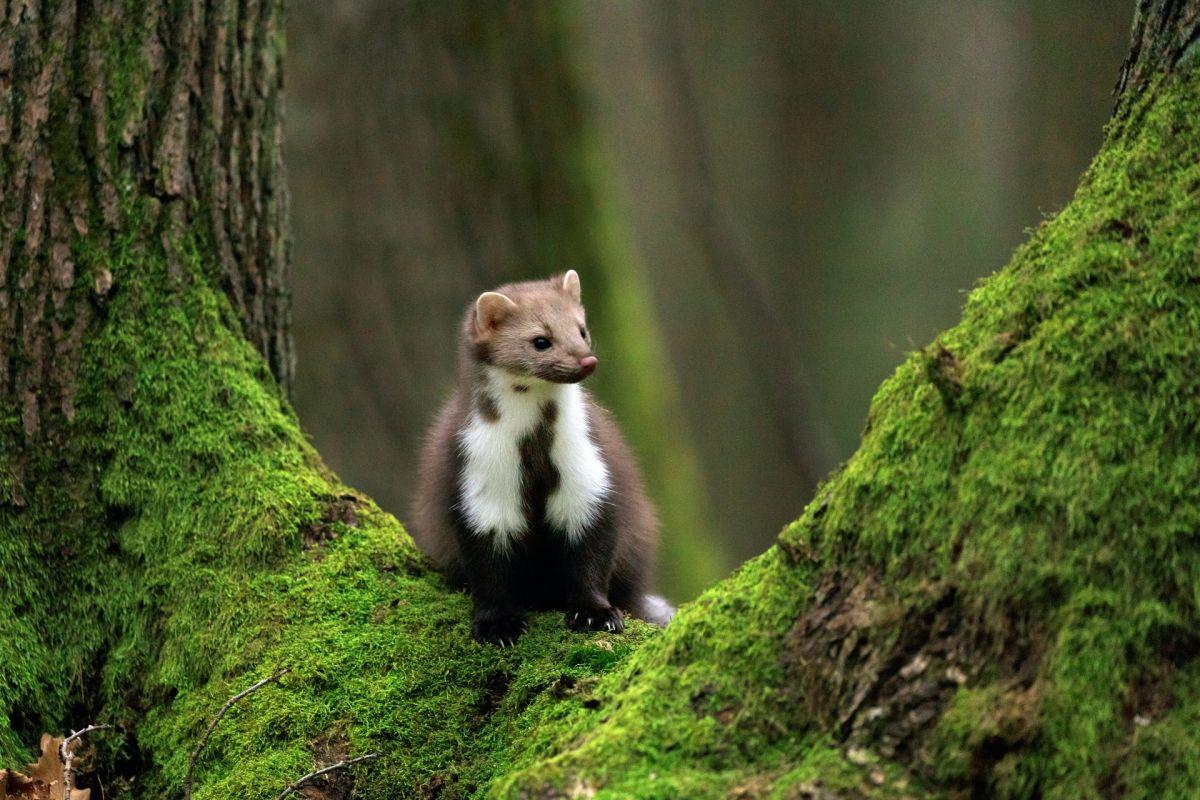
- Name: European pine marten
- Scientific name: Martes martes
- Conservation status:
The European pine marten, also known as the sweet marten or the baum marten, is a species of mustelid native to almost all of Europe, and it can be found in mainland Norway. Although considered of least concern and having a wide range and large numbers, it is still threatened by human conflict, persecution, habitat loss, and hunting for its fur.
This mustelid leads a unique arboreal lifestyle, and it is known to eat berries, nuts, honey, and bird eggs.
18. Harbor porpoise
- Name: Harbor porpoise
- Scientific name: Phocoena phocoena
- Conservation status:
The harbor porpoise is one of the smallest species of porpoise, native to the northernmost coastlines of the Pacific and the Atlantic Oceans. As its name suggests, it usually stays near coastal areas, which is why it is listed as vulnerable to extinction in Europe: fishing accidents, ship strikes, and hunting are not uncommon.
When this porpoise surfaces to breathe, it makes a characteristic sound, which is why it is known as “nise” in Norway, which roughly means “sneeze”.
19. Leatherback sea turtle
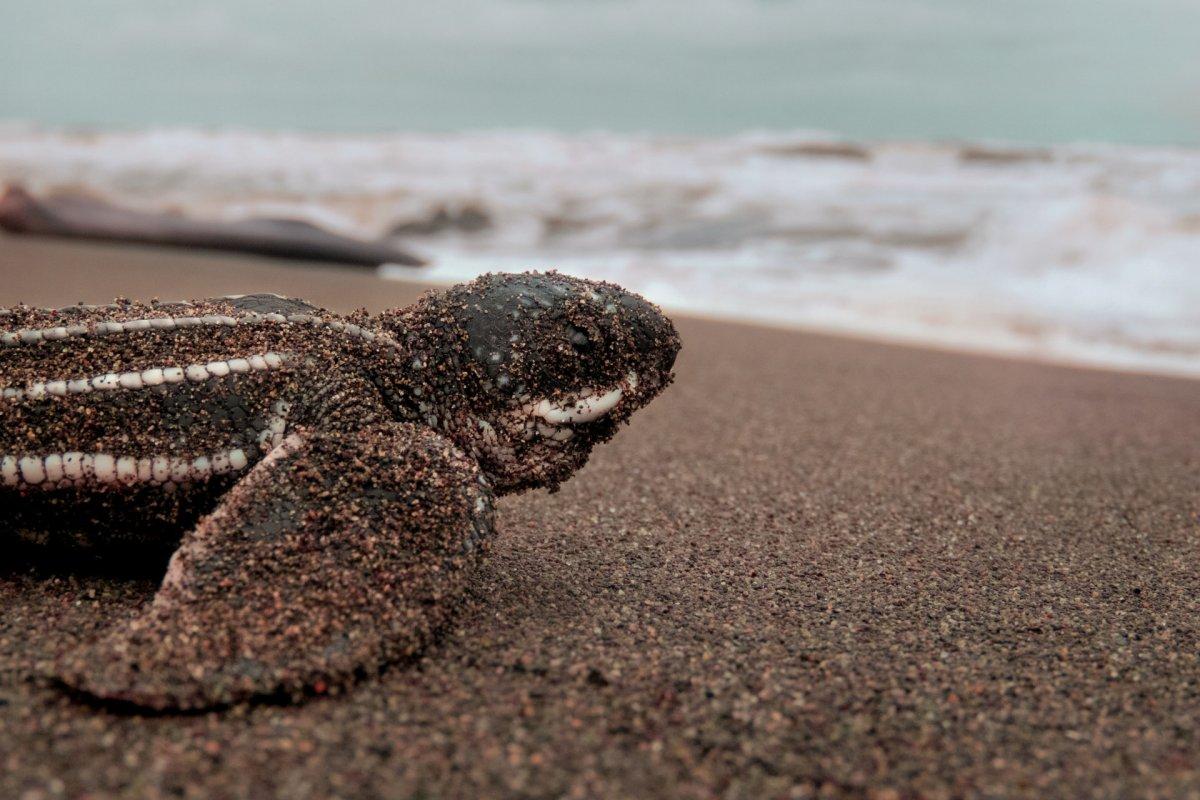
- Name: Leatherback sea turtle
- Scientific name: Dermochelys coriacea
- Conservation status:
The leatherback sea turtle, also known as the leathery turtle, the lute turtle, or simply the luth, is the largest and heaviest turtle in the world, and the heaviest reptile outside of crocodiles! While it can be found around the temperate, tropical, and subtropical waters of the world, it increasingly goes northwards because of global warming and is an occasional vagrant in Norway.
Although there are about 26,000 to 43,000 females nesting every year, this number used to be much higher during the 1980s (about 115,000), hence why this species is considered vulnerable to extinction.
20. Arctic char
- Name: Arctic char
- Scientific name: Salvelinus alpinus
- Conservation status:
The Arctic char, also known as the Arctic char, is a species of salmon native to subarctic and arctic coastal waters, as well as alpine lakes. It inhabits much of the freshwater lakes within the Svalbard archipelago.
This salmon spawns in freshwater, usually around an estuary or a river, and joins the ocean after that. Depending on the time of the year and the conditions of its habitat, the Arctic char’s colors greatly vary.
21. Eurasian otter
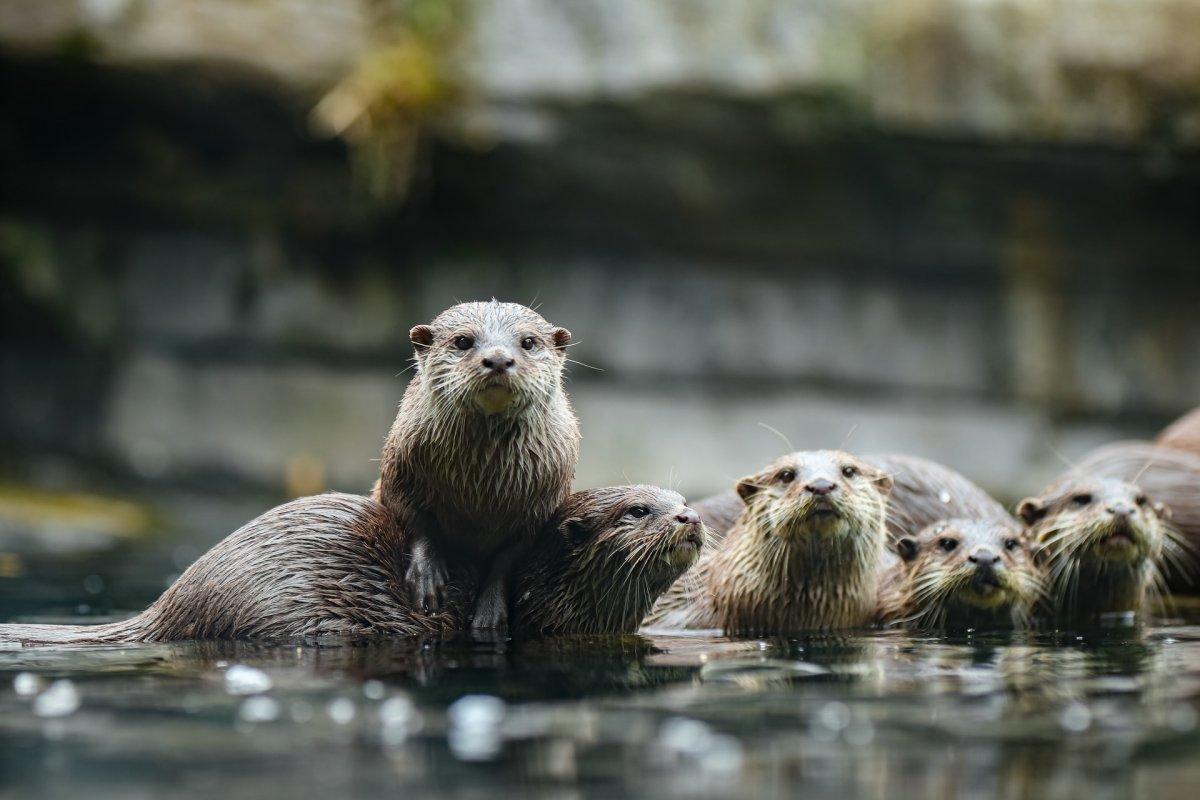
- Name: Eurasian otter
- Scientific name: Lutra lutra
- Conservation status:
The Eurasian otter, also known as the Old World otter, the river otter, or the common otter, is a species of semi-aquatic mammal native to a vast area of Eurasia. It can be found in the freshwater rivers and coasts of Norway, and primarily feeds on fish.
Despite being considered near threatened and on the decline in several areas of its range, the Eurasian otter is very common on the coasts of Norway.
—
So there you have them, these were my 21 Norway native animals. I hope you enjoyed this list and that you learned something new today.
In case you want to learn more about animals of Norwegian wildlife, feel free to keep reading, as I still have lots of things to tell you about:
Endangered Animals of Norway
This is definitely the saddest part of the list, but it is very important to raise awareness. Because of this, let’s go through the list of endangered animals in Norway.
Here are the animals in danger of extinction in Norway.
- None
- North Atlantic right whale
- Yellow-breasted bunting
- Atlantic sturgeon
- Balearic shearwater
- Roundnose grenadier
- and 5 more…
- Blue whale
- Angular roughshark
- European rabbit
- Pallas’s fish-eagle
- Shortfin mako
- and 9 more…
To see the full list of endangered species in Norway, head over to the International Union for Conservation of Nature’s Red List.
What is the National Animal of Norway?
Norway national animal is the lion.
While the fjord horse is the national horse and the white-throated dipper is the national bird, it is the lion that best represents the spirit of Norway.
Every morning at 8 AM, the Royal Banner is hoisted over the Royal Palace of Oslo, and there is obviously a lion on it. Although there are no lions in Norway, this animal is an emblem of strength, bravery, and might of the kings.
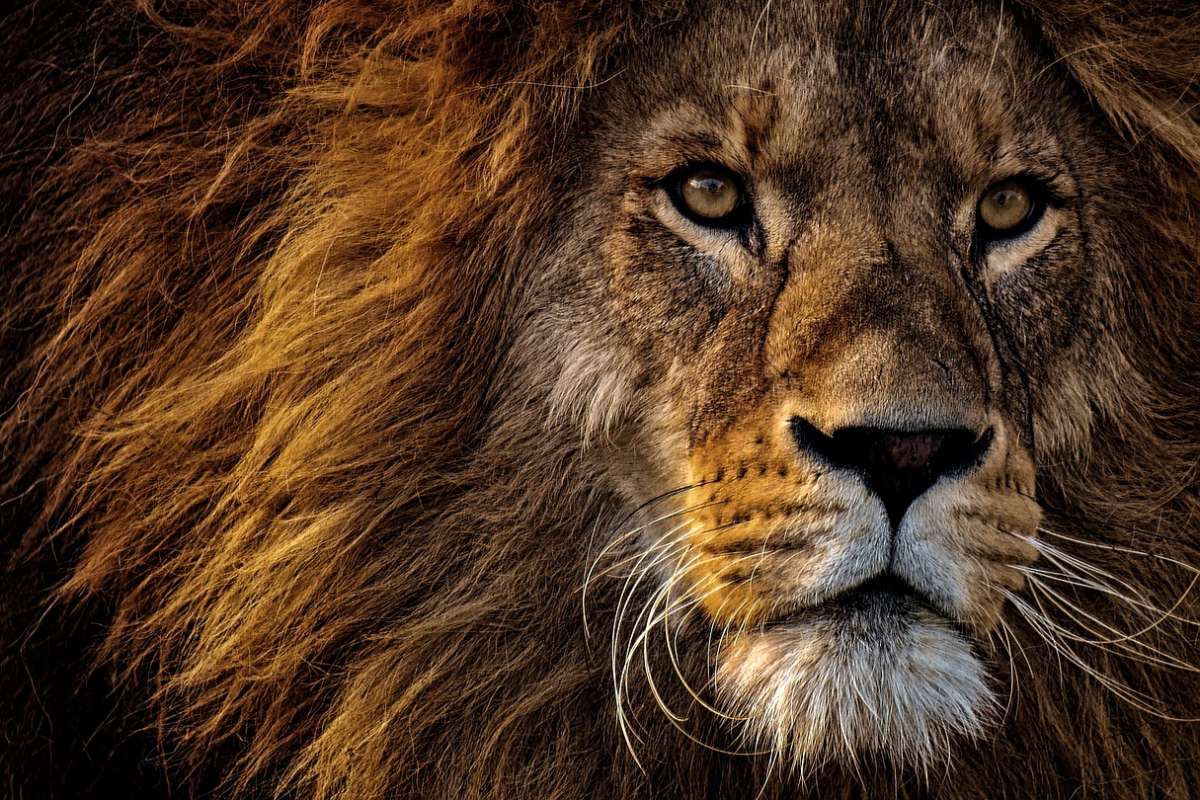
How Many Animals Native to Norway?
What is the diversity of native animals in Norway?
Let’s look at the total number of species of Chordata (mammals, birds, fishes, and reptiles).
Total number of animal species in Norway: 795 (3,149 in total in Europe)
More About Animals in the World!
Loved these Norway wildlife facts? Want to see what animals live in other countries?
Then check out these posts:
Or click here to see ALL the facts up on the blog! Spoiler alert: there’s A LOT of them.
Share the knowledge! Click on the buttons below to share information about these common animals in Norway with your friends, and help them learn more about the world 🙂
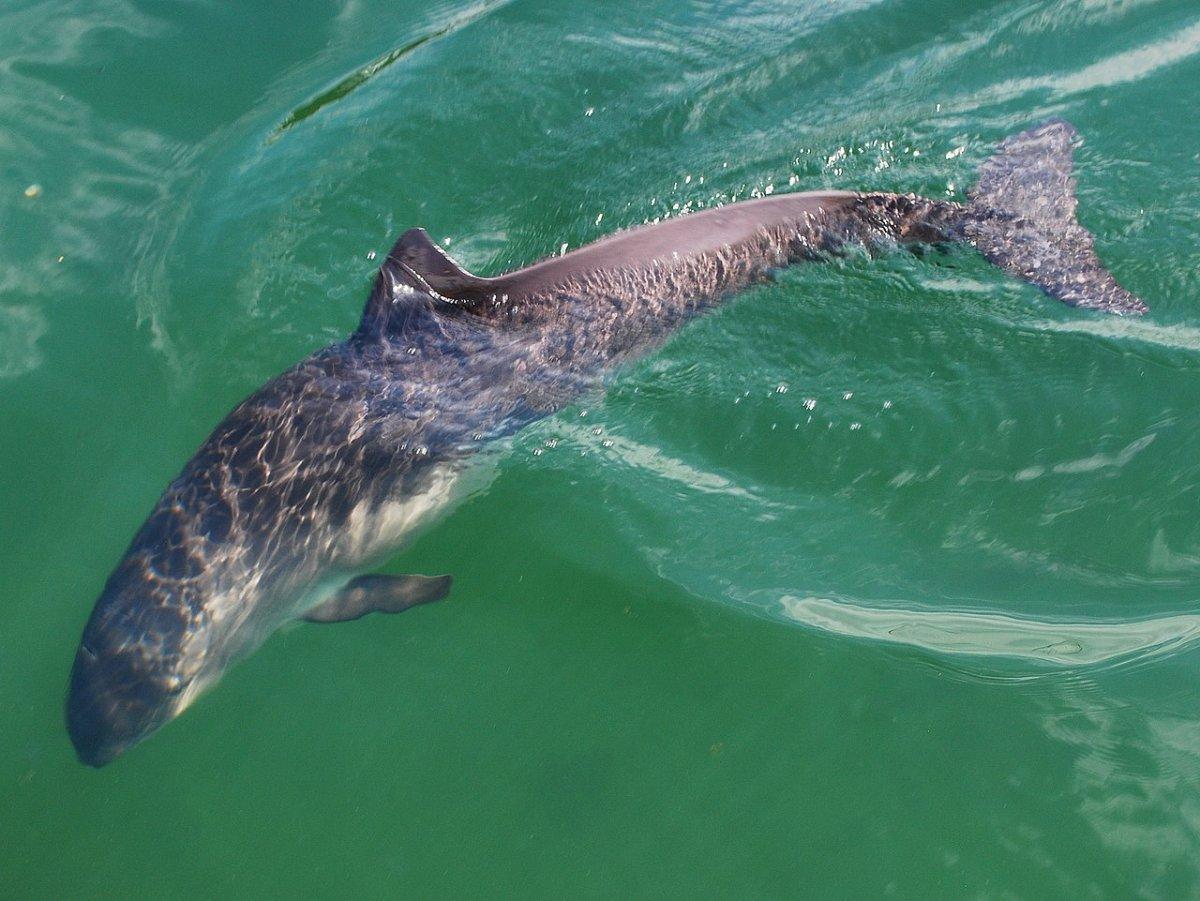
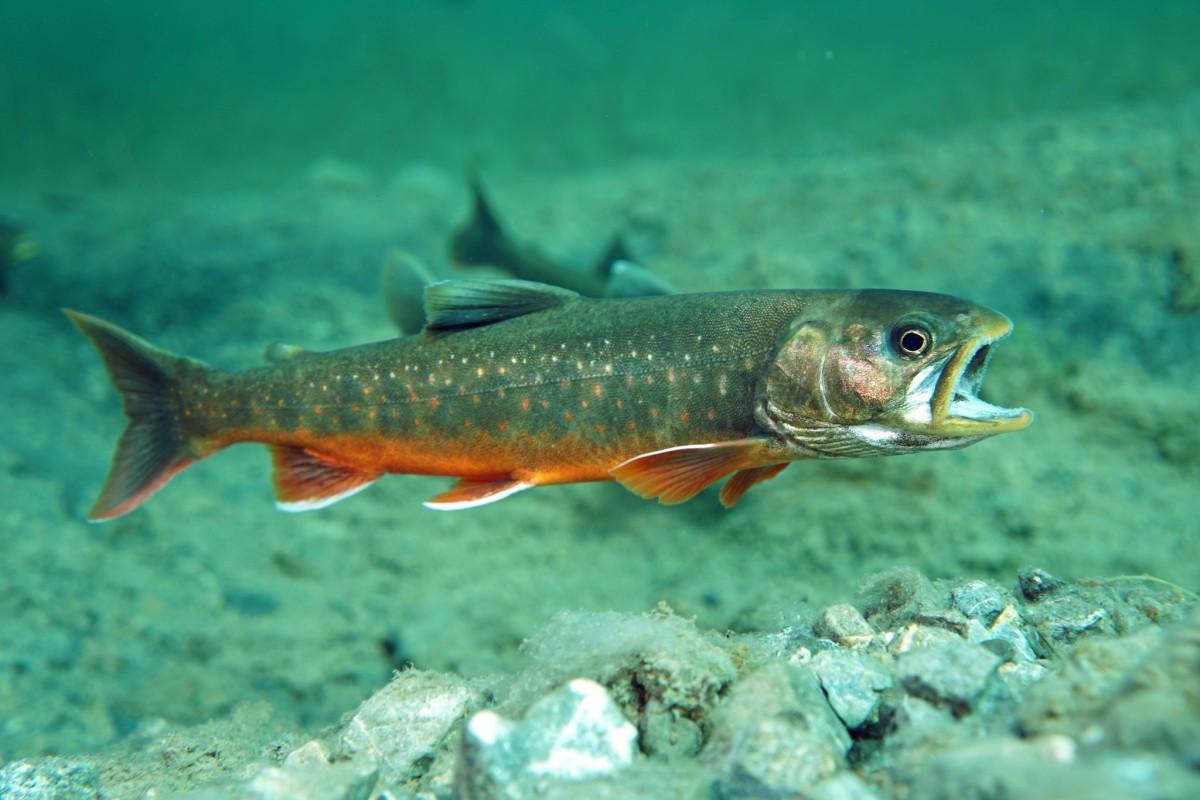

![13 Wild Animals in Sierra Leone [Wildlife in Sierra Leone]](https://www.kevmrc.com/wp-content/uploads/2022/12/13-wild-animals-in-sierra-leone.jpg)
![21 Wild Animals in Guatemala [Wildlife in Guatemala]](https://www.kevmrc.com/wp-content/uploads/2022/08/21-wild-animals-in-guatemala.jpg)
![23 Wild Animals in Turkey [Wildlife in Turkey]](https://www.kevmrc.com/wp-content/uploads/2022/12/23-wild-animals-in-turkey.jpg)